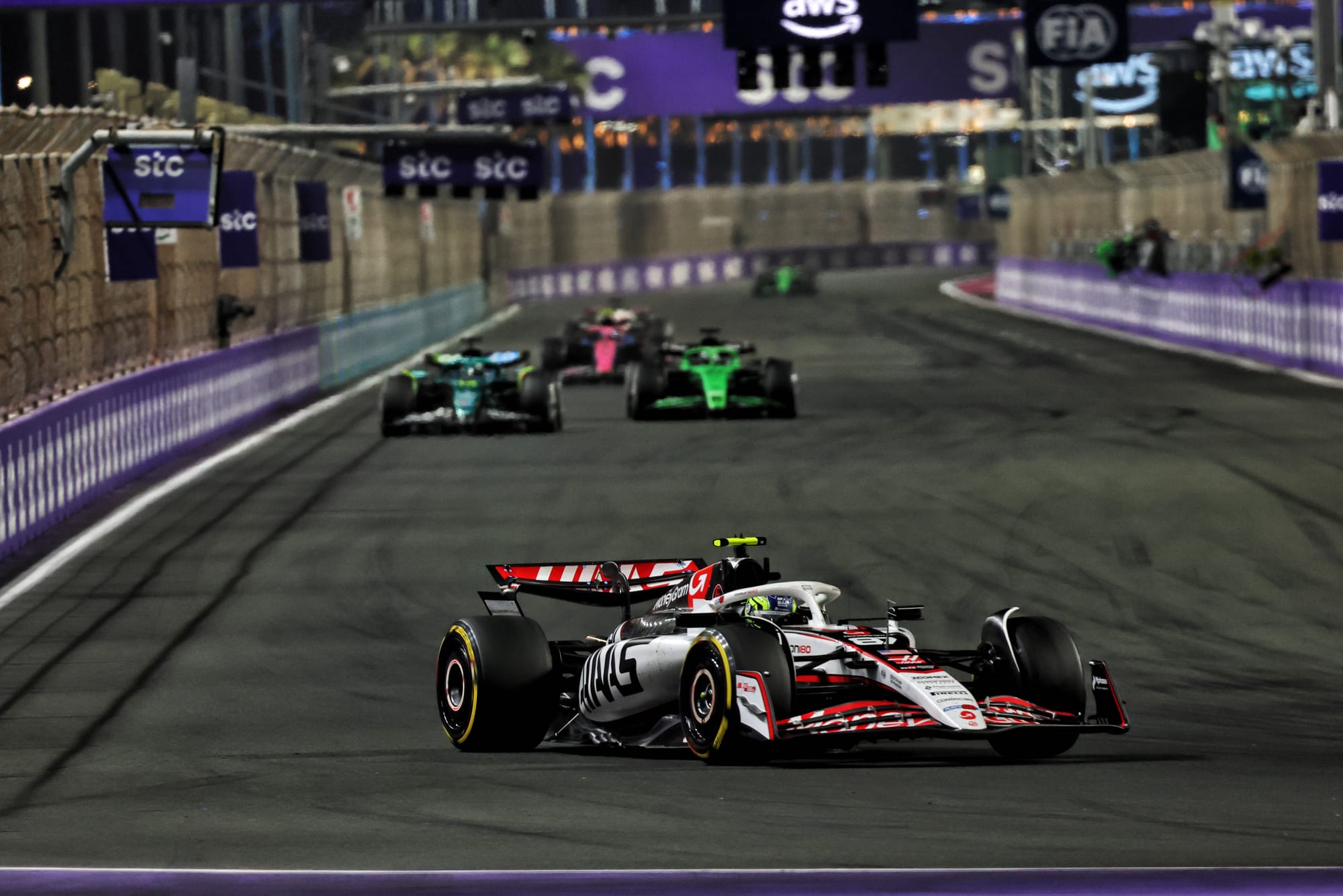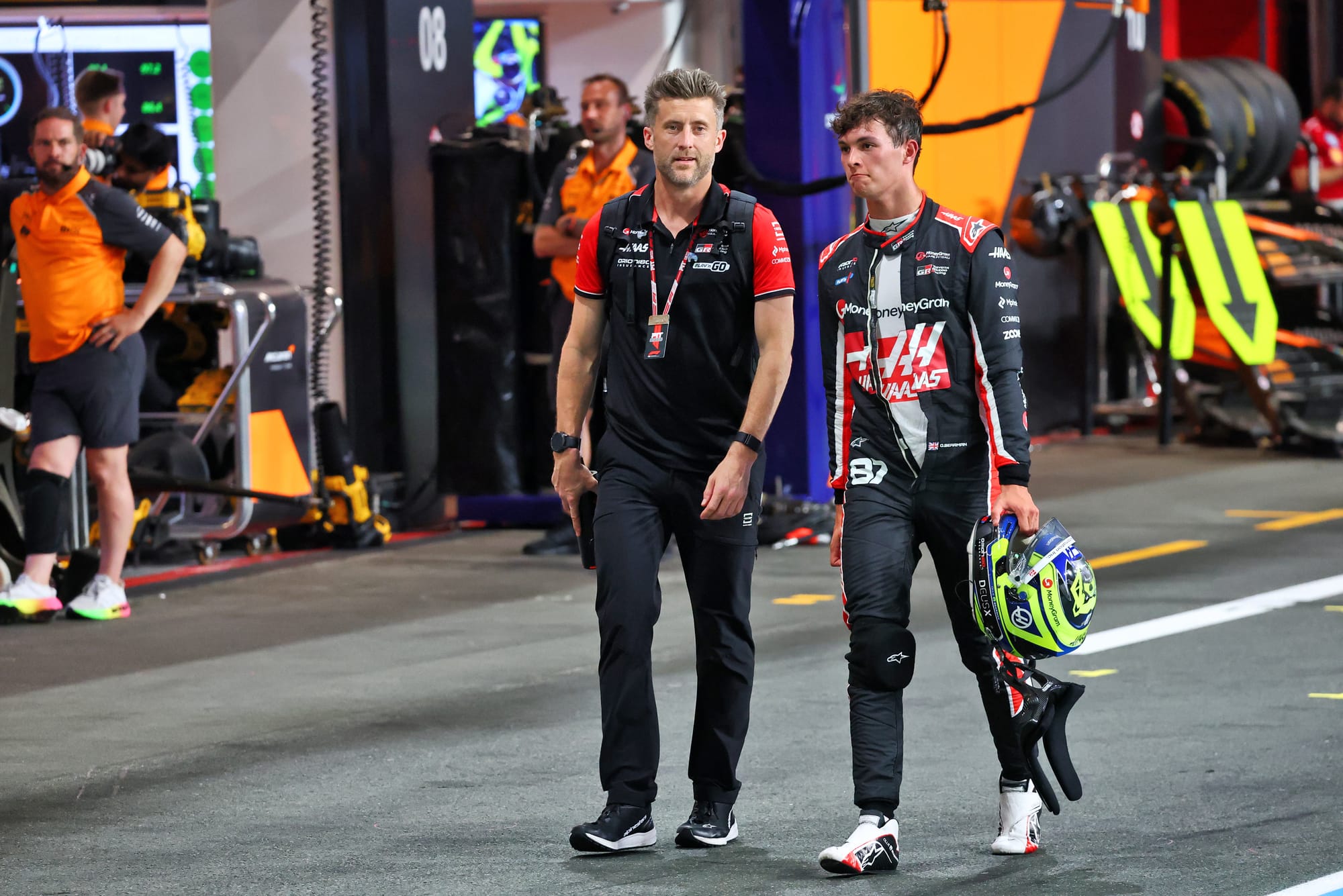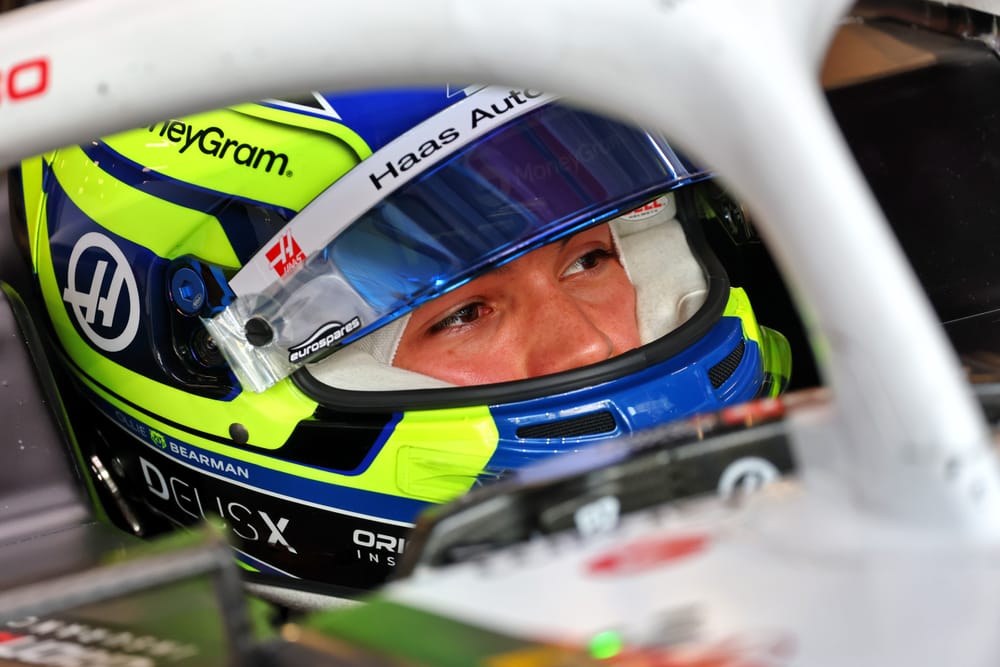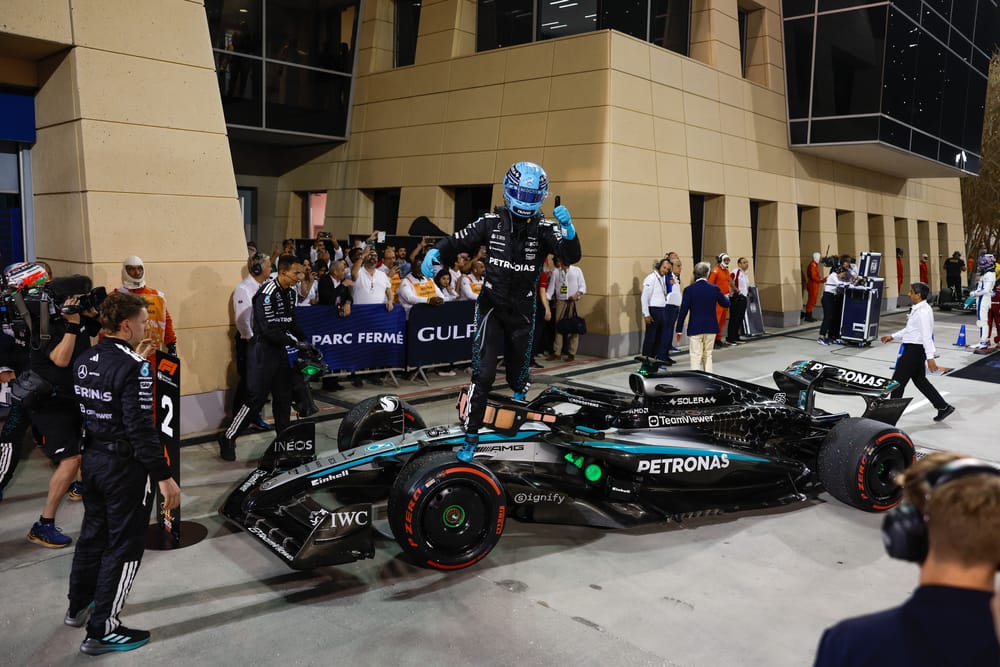Haas driver Ollie Bearman wants Formula 1 to re-evaluate its approach to how new cooling vest tech is being regulated in the 2025 season and beyond.
The cooling vests - intended to safeguard the F1 grid from the kind of conditions that made the 2023 Qatar Grand Prix infamous for the toll it took on drivers - were originally earmarked for mandatory use in 'heat-hazard' races.
As drivers weren't exactly universally convinced by the design in the pre-season, the use of the vests was made optional instead, but in aforementioned 'heat-hazard' races their use is offset by a 5kg ballast for those electing not to run the tech, ensuring a level playing field.
Bearman's team-mate Esteban Ocon had described the product as "not usable" in Bahrain testing, due to the "knot of tubes" that just could not be adequately placed within the confines of an F1 car cockpit, but the vest has now been raced, with George Russell known to have debuted it in the Bahrain Grand Prix.
"The changed the design slightly. [The outlet] has now just moved a bit more towards the middle of your body and therefore you can actually get in the seat. Before, with the original design, you couldn't actually get in the car with it," Bearman explained.
"The original design didn't work for anyone. Now it works pretty well."
And Bearman said it proved immediately beneficial to him during Saudi Arabian Grand Prix practice.
"It seemed really-really good. I'm really happy with what they've been able to do to roll that out. And actually that it's been successful and quite useful.
"You do feel it a little bit. Especially on your back, because you're pushed up against the seat. But honestly the benefit of having cool water, even if it just works for 10-15-20 laps of the race, I think it's game-changing."

However, Bearman lamented, Haas could not afford to use the vest in the sessions that actually mattered in Jeddah - because the race had not been declared a heat hazard, which requires the anticipation of a 30.5°C ambient temperature.
The Jeddah race started at below 30, though it did end up with a recorded air temperature maximum of 31.8 degrees.
But with the lack of the FIA dispensation, Haas could not afford to take the 5kg hit if its rivals weren't saddled with the mandatory ballast.
Bearman pointed out that Williams and Mercedes drivers - namely the aforementioned Russell - have used it anyway, and this is presumably because those teams have enough ballast in the car normally to largely mitigate the extra weight of the cooling vest by just taking out said ballast.
Haas isn't in that position, and won't be any time soon.
"It's heavy, the whole cooling system is heavy. We're trying to get the most performance out of the car, we're not trying to make the car lighter to run a cooling vest," said Bearman.
"Unfortunately, we'll have to suffer a bit until they hopefully change something to allow us to run it a bit more freely.
"If they [the FIA] are never going to declare it hot enough to race [with the vest], then only half the teams are getting the benefit, which seems a bit unfair, so let's see."
Bearman later amended his word choice, saying that it wasn't necessarily "unfair" but "something that needs to change" - given it's a safety measure.
It is known that not every driver on the grid - even out of those who had enough ballast margin - felt it has been worthwhile to race with the vest as of yet.

But Bearman was "quite dehydrated for a few days" after the Jeddah, so clearly believes it would've made a big difference for him there despite the ambient temperatures appearing manageable.
"It's such a hot race - and what you don't see is the humidity. The heat, it may be 27-28-29 degrees, but with 60-70 percent humidity, with all those layers on, it's really really hot.
"And having cool water is life-changing. It really helped me in free practice."
The GPDA director view
Asked by The Race for his overview as someone who has raced the vest but also someone who is a director of F1's Grand Prix Drivers Association, Russell said: "I mean, I feel fortunate that I've had the chance to run with the cooling vest. It's not perfect yet but it's definitely an improvemnet, I feel.
"You know, every car is also different, I think every cockpit runs at different temperatures. We've seen our cockpit get up to 60 degrees before, and I think the heat hazard [threshold] is 30-31 [actually 30.5] degrees?
"But when you compound that with the sunlight and the temperature of the cockpit - it is like a sauna in a race car. I don't know, we've not collectively spoken about it, not everybody is in favour to run it - which is also fine. Somebody made the point recently, football players on a cold, cold day, some people are wearing gloves, some people have got short-sleeve shirts on. And that should be the driver's choice.
"And maybe that heat hazard [threshold] should be reduced slightly. Because we've not yet gone over it, and there have been [hot races] - Saudi was hot, Bahrain was hot. So maybe it could be adjusted by a few degrees."




